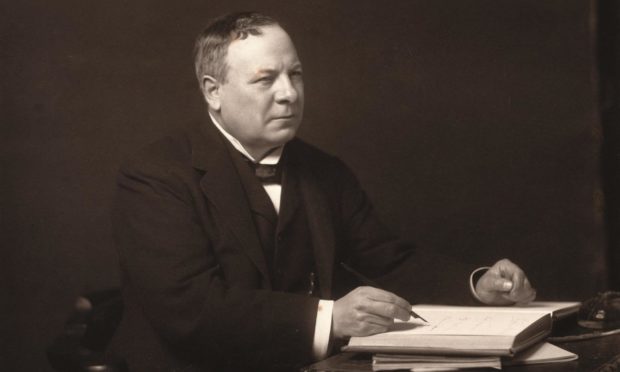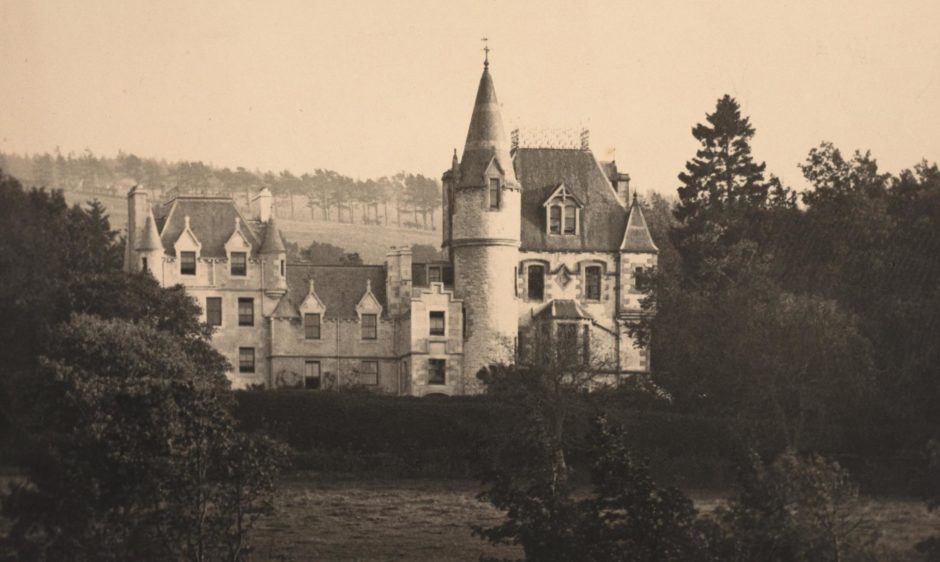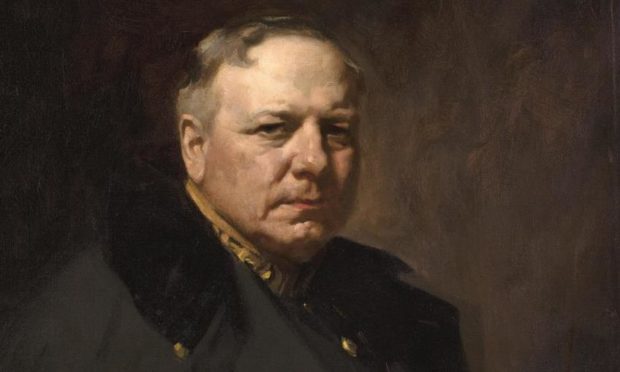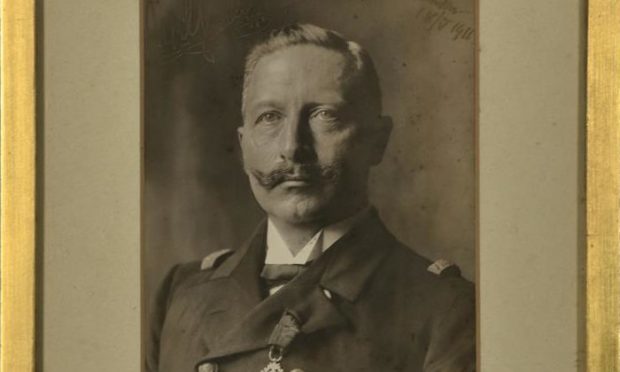Sixty years ago a 12-year-old schoolboy visited Cloan, a grand, fairy-tale, turreted house near Auchterarder for the summer holidays.
Amid the splendour of the vast drawing room, the boy’s eye alighted on a stamp on the ceiling. As a keen stamp collector, the boy was able to identify it as a George V penny red. The story of how the stamp found itself up there was an unusual one.
The boy was told that J. M. Barrie had been a house guest 40 years before. The creator of Peter Pan had made a bet that he could stick the stamp on the ceiling without the use of a ladder or pole. The author licked the stamp and folded over a corner, which he fixed to a half-crown. He then tossed the coin upwards and, sure enough, the stamp stuck on the ceiling and the half-crown returned to Barrie’s hand.
But it wasn’t J.M. Barrie’s party trick that was to develop into an enduring fascination for the schoolboy. Rather it was the playwright’s host, Lord Haldane, that captured the imagination of the young John Campbell.
Lord Chancellor’s velvet purse…
Haldane cast a long shadow over the house – from his portrait over the fireplace to relics of his distinguished political career in the form of old Despatch Boxes, numerous silver trowels for opening universities and the Lord Chancellor’s velvet purse for keeping the Great Seal of England.
Campbell’s interest in Lord Haldane developed as he forged lifelong friendships with the politician’s relatives at Cloan. All these years later, Campbell, now a city financier in his early 70s, has written a towering biography of a great Scottish statesman whose legacy has been somewhat neglected in recent times.
Published during the lockdown, the book recounts Lord (Richard) Haldane’s life story from his birth and education in Edinburgh to his myriad achievements as brilliant lawyer, philosopher, politician and linguist.
They range from the foundation of the UK’s red-brick universities, Imperial College and LSE to the Medical Research Council.
But his most noteworthy accomplishment was the creation of the British Expeditionary Force, the forebear of today’s infantry, the Territorial Army, and creating a military template that paved the way for the RAF and intelligence services.
Without his determined and brilliant reform of the UK’s defences in the early years of the 20th Century, it is doubtful whether Britain would have been capable of winning the Great War. On Remembrance Day, it feels appropriate that Haldane’s spell as Minister for War from 1905 to 1912 should be remembered alongside those who made the ultimate sacrifice.
Poisoned political chalice
It is perhaps also worth reflecting on the unfortunate events that led to Haldane being an overlooked figure today – his unjust vilification as a German sympathiser, which resulted in his ejection from the Liberal government in 1915.
As Campbell’s book, Haldane: The Forgotten Statesman Who Shaped Modern Britain, relates, Minister for War was regarded as a poisoned political chalice. A huge and vital government department, the War Office had been a graveyard for many a promising political career.
Despite this, Haldane was to make a huge success of the role, rebuilding and reforming the UK’s defences in the aftermath of the Boer War.
Much of his inspiration for this was derived from Germany. As a young man, he had studied at Gottingen University and was introduced to and became fascinated by German philosophers.
As War Minister he visited Berlin and met Kaiser Wilhelm II in 1906, at a time when relations between Britain and Germany were warm. He studied how the German War Office and General Staff worked, which then had a major influence on his plans to reconstruct the British Army.
“The Boers had almost brought down an Army which should have been able to put 400,000 people into the field. So Haldane totally restructured the British Army in a way that every other minister of war had failed to do,” explained Campbell.
“Everything we have today in terms of the regulars, the Territorial Army, MI5, MI6, the Royal Flying Corps, which became the RAF, were all Haldane’s creation.”
It was down to Haldane’s reforms that the British Expeditionary Force was able to mobilise as quickly as it did at the outbreak of war in 1914.
Haldane’s downfall
But the following year, Haldane was to be ejected from the Cabinet, in which he now served as Lord Chancellor, following press attacks on his German connections.
In 1911 the Kaiser invited himself to lunch at Haldane’s London residence when he was over for George V’s coronation. And in 1912 Haldane had been sent on a secret mission to Germany with the objective of slowing down the arms race between the two countries, which was interfering with Liberal social reform.
These links were exploited by the press baron Lord Northcliffe. Hostile coverage in the newspapers whipped up the anti-German fervour of the time and Haldane was dismissed as Lord Chancellor.
“His great skill was organising, hard thinking and making things happen. I find it so sad that he wasn’t able to serve the country in its direst hour, having prepared it for the direst hour,” Campbell said.
Haig’s high praise
Vindication was to follow vilification, however. At the end of the war Earl Haig led a victory parade through London. Haldane was not invited. But Haig refused to leave the city before going to visit him. As commander of the British Expeditionary Force, Haig insisted seeing Haldane to tell him he was the “greatest Secretary of State for War Britain’s ever had”.
It was a fitting description of a self-effacing and undogmatic statesman. The challenges thrown up by the coronavirus and the constitution may not compare with the horrors of the early 20 Century, but one suspects Haldane’s abilities would be much sought after today.
Haldane: The Forgotten Statesman Who Shaped Modern Britain by John Campbell is published by Hurst & Company, London.



